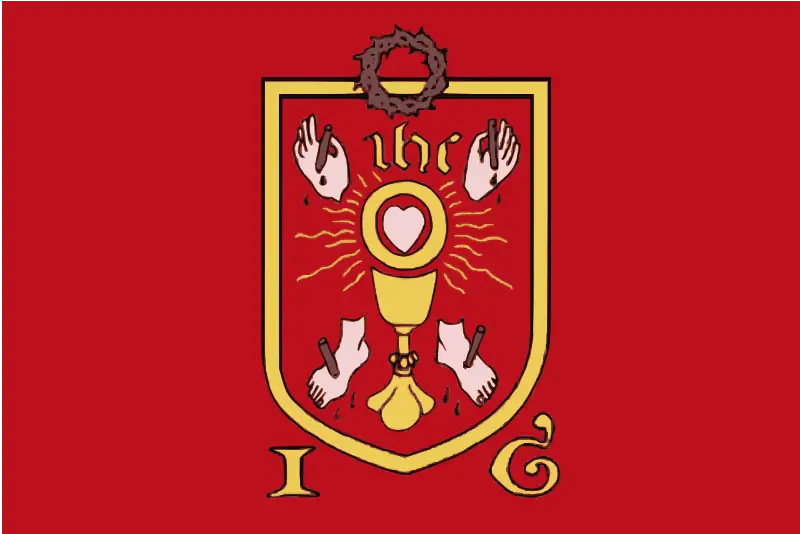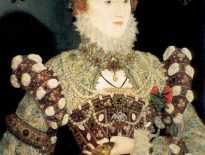
Lord Russell
The Prayer Book Rebellion was a rebellion that took place in the south-west of England in the summer of 1549, in the reign of King Edward VI.
Henry VIII, Edward VI's father and the previous monarch, had broken with Rome in the 1530s and had been declared the Supreme Head of the Church in England. Although Henry had died a Catholic, the break had brought religious changes to the country and these had become more Protestant when his young son came to the throne.
In 1549, the Book of Common Prayer, which had been composed mainly by Archbishop Thomas Cranmer and which was the official liturgy of Edward VI's Protestant Church, was introduced into England. It was in English and it replaced the Catholic Mass that the English people were used to celebrating. You can read more about the Book of Common Prayer in Beth von Staats' excellent article - click here. This change wasn't embraced by all of the English people and in the summer of 1549, there was trouble in Devon and Cornwall. The rebels called for the rebuilding of abbeys, the restoration of the Six Articles, the restoration of prayers for souls in purgatory, the policy of only the bread being given to the laity and the use of Latin for the mass.
Here are the key events of the Prayer Book Rebellion with links for further reading:
- The Siege of Exeter - In July 1549, the Cornish and Devonshire rebels laid siege to the city of Exeter. The siege lasted for 5-6 weeks.
- 28 July 1549 - The Battle of Fenny Bridges - This was an inconclusive battle between the rebels and the Crown's forces led by John Russell, 1st Earl of Bedford. It was reported that around 300 rebels died.
- 4 August 1549 - The Battle of Woodbury Common
- 5 August 1549 - The Battle of Clyst St Mary
- 6 August 1549 - The Battle of Clyst Heath
- The Relief of Exeter - Following his success at the Battle of Clyst Heath, Lord Russell marched on to Exeter to relieve the city.
- 17 August 1549 - The Battle of Sampford Courtenay - Following their defeat that the Battle of Clyst Heath, the surviving rebels regrouped at Sampford Courtenay, near Okehampton, under the leadership of Sir Humphrey Arundell. On 17th August 1549, the rebels were routed there by the larger royal forces. It was the end of the rebellion. On 27th January 1550, Arundell and other rebel leaders were executed at Tyburn.
Further Reading
- Nicholas Poc*ck's primary source account Troubles connected with the Prayer Book of 1549 can be read online at https://archive.org/details/troublesconnec00camduoft
- Hooker, John (1765) The Ancient History and Description of the City of Exeter - This can be read at https://books.google.co.uk/books?id=hMcpAAAAYAAJ&hl=en
- The Prayer Book Rebellion of 1549, Devon Perspectives, http://www.devonperspectives.co.uk/prayerbook_rebellion_1.html
- "9 places associated with the Prayer Book Rebellion", article by Charlotte Hodgman, History Extra - http://www.historyextra.com/feature/prayer-book-rebellion
- The Anglo-Cornish War of June-August 1549 - http://www.cornwallinformation.co.uk/news/the-anglo-cornish-war-of-june-august-1549/
- Wood, Andy (2007) The 1549 Rebellions and the Making of Early Modern England, Cambridge University Press.



The Western Prayer Book rebellions were brutally put down and thousands of people were killed in the fighting and aftermath. It is often overlooked in the study of the reformation and it is ironic that today a prayer book few people actually wanted is so respected for its beautiful old language and is widely popular.
So much had happened in such a relatively small time, what with the dissolution of the monasteries that had had such a negative impact in that it had taken away the welfare system that the common people relied on. Then all of this on top of that, scary times for the people.
Yes, something like six or seven different forms of worship in less than 40 years, I think someone said in a documentary once. It must have been frightening and confusing.
Definitely and you weren’t really safe whichever “flavour” you practised.